SLOCAT Quick Wins on Transport,
Sustainable Development and Climate Change
The 20 SLOCAT Quick Wins on Transport, Sustainable Development and Climate Change is a course of immediate, bold and ambitious action for shifting the transport paradigm towards an equitable 1.5ºC Planet. The Transport Quick Wins were proposed through a wide consultation conducted by the SLOCAT Partnership with a broad set of transport experts and other stakeholders, and have been evaluated through multifaceted impact analysis. They are:
- Tested at scale and are replicable with the possibility for large-scale impact;
- Technically and economically feasible in both developed and developing countries using available technologies;
- Available for both passenger and freight transport, with a reasonable balance between the two, and relevant to the Avoid-Shift-Improve Framework.
These actions have the potential to contribute toward reducing GHG emissions, thereby moderating climate impacts, while at the same time providing key sustainability benefits. Stakeholders should take into consideration the Transport Quick Wins in the strategic planning, implementation, evaluation and review process of the SDGs.
Further studies
- Quick Wins on Transport, Sustainable Development and Climate Change (2016)
SLOCAT Partnership - Low-Carbon Quick Wins: Integrating Short-Term Sustainable Transport Options in Climate Policy in Low-Income Countries (2019)
Stefan Bakker,* Gary Haq, Karl Peet, Sudhir Gota, Nikola Medimorec, Alice Yiu, Gail Jennings and John Rogers
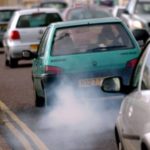 Accelerate deployment of tighter diesel fuel quality standards to reduce emissions of black carbon and other short-lived climate pollutants
Accelerate deployment of tighter diesel fuel quality standards to reduce emissions of black carbon and other short-lived climate pollutants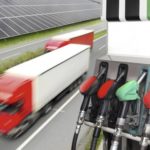 Accelerate phase-out of fossil fuel subsidies
Accelerate phase-out of fossil fuel subsidies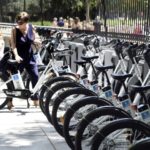 Expand car and (e-)bike sharing systems in primary and secondary cities
Expand car and (e-)bike sharing systems in primary and secondary cities Expand city transport official training programs to build local capacity for sustainable transport in primary and secondary cities
Expand city transport official training programs to build local capacity for sustainable transport in primary and secondary cities Expand sustainable freight recognition schemes to reward proactive carriers and shippers
Expand sustainable freight recognition schemes to reward proactive carriers and shippers Expand use of ICT applications for real-time travel information and route planning for walking, cycling, public transport and car-sharing
Expand use of ICT applications for real-time travel information and route planning for walking, cycling, public transport and car-sharing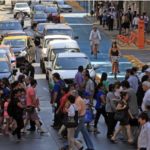 Formulate Sustainable Urban Mobility Plans (SUMPs) in primary and secondary cities
Formulate Sustainable Urban Mobility Plans (SUMPs) in primary and secondary cities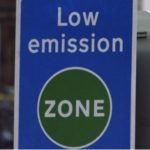 Implement (ultra-) low emission zones, including car-free zones in city centers
Implement (ultra-) low emission zones, including car-free zones in city centers Improve freight efficiency (e.g. reduce empty load running by freight trucks) through route optimization, asset sharing between companies, and increased use of ICT solutions
Improve freight efficiency (e.g. reduce empty load running by freight trucks) through route optimization, asset sharing between companies, and increased use of ICT solutions Implement zero-emissions (last-mile) urban freight through e-mobility and cycling solutions
Implement zero-emissions (last-mile) urban freight through e-mobility and cycling solutions Increase quality, availability, reliability, frequency, and efficiency of bus-based transit
Increase quality, availability, reliability, frequency, and efficiency of bus-based transit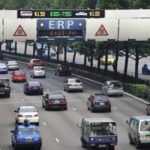 Introduce and scale up pricing for car-related travel options (e.g. congestion/road charging, parking pricing) in primary and secondary cities
Introduce and scale up pricing for car-related travel options (e.g. congestion/road charging, parking pricing) in primary and secondary cities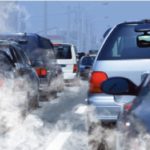 Introduce carbon pricing for the transport sector where (sub-) national carbon markets currently exist or are under development.
Introduce carbon pricing for the transport sector where (sub-) national carbon markets currently exist or are under development. Introduce car-free days and ciclovías (temporary street closures to encourage cycling and walking) in primary and secondary cities to build support for longer-term policies.
Introduce car-free days and ciclovías (temporary street closures to encourage cycling and walking) in primary and secondary cities to build support for longer-term policies. Invest in rural road maintenance and modern supply chains to reduce global food loss and waste
Invest in rural road maintenance and modern supply chains to reduce global food loss and waste Legislate and enforce stricter speeding regulations by operational and technical means to reduce emissions and road crashes
Legislate and enforce stricter speeding regulations by operational and technical means to reduce emissions and road crashes Modernize ageing rail fleets and traction systems to increase efficiency
Modernize ageing rail fleets and traction systems to increase efficiency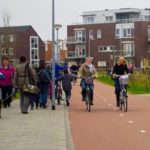 Provide and improve walking and cycling infrastructure (e.g. connected walking paths, protected cycle lanes), reallocating roadspace where necessary
Provide and improve walking and cycling infrastructure (e.g. connected walking paths, protected cycle lanes), reallocating roadspace where necessary Tighten fuel economy standards for passenger vehicles
Tighten fuel economy standards for passenger vehicles